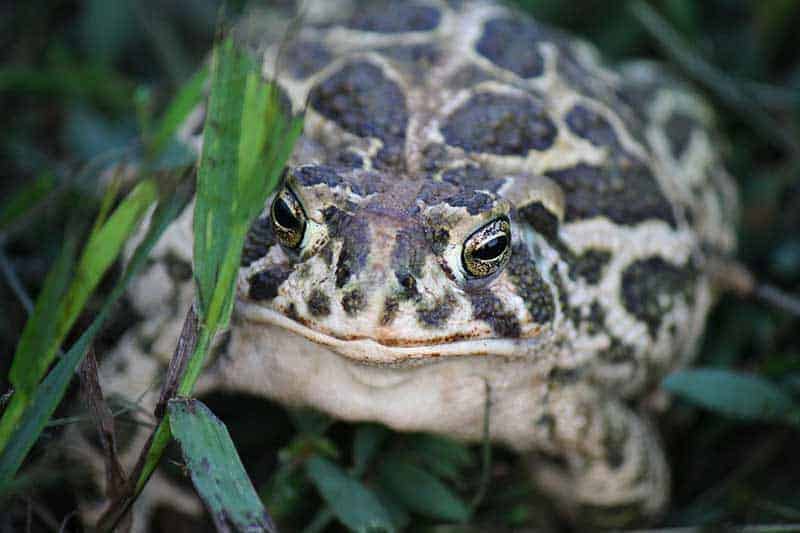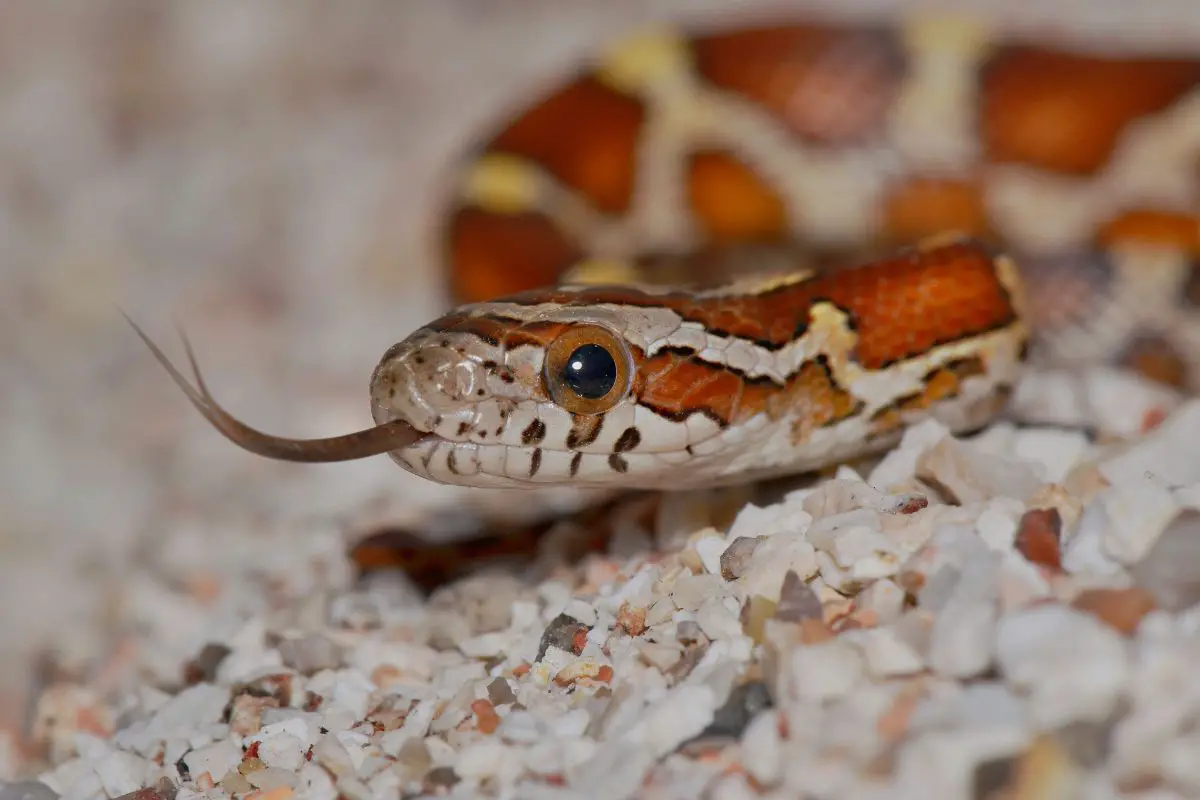You can find toads on every continent globally, except Antarctica. In North America, there are 10 species of toads in Colorado. Most of them are in the Family Bufonidaee, known as true toads. The others are in the Family Microhylidae, Rhinophrynidae, or Scaphiopodidae.
Generally, toads live in open landscapes, humid conditions, or suburban locations. Toads also breed near bodies of water and need to lay eggs near them. Colorado has 4,000 lakes and reservoirs as well as 158 named rivers, which creates ample habitats for many species of toads.
Although both toads and frogs are part of the Anura order, they are very different in their skin type, sounds, and warts. Toads can also survive out of water longer, so you can often find toads further away from water bodies. This article will provide you with information on the 10 types of toads in Colorado.
Let’s hop into the list!
10 Toads in Colorado
The 10 different species of toads in Colorado are the western green toad, boreal toad, Woodhouse’s toad, Great-plains toad, Great Plains narrow-mouthed toad, red-spotted toad, Couch’s spadefoot toad, Mexican spadefoot toad, great basin spadefoot toad, and the plains spadefoot toad.
1. Woodhouse’s Toad

Scientific name: Anaxyrus woodhousii
The Woodhouse’s toad is grayish-brown or yellowish-brown with small dark spots. However, their bellies are paler and usually without spots. They can grow up to 5 inches in length and have long and large parotoid glands, distinguishing them as notable toads of Colorado.
2. Great Plains Toad

Scientific name: Anaxyrus cognatus
The Great Plains toad occurs mainly in Eastern Colorado. They can easily burrow in loose soil and enjoy open grasslands or ditches. These toads are brown, grey, and green in color with darker botches. They have numerous warts and prominent ridges on their head. Females grow larger than males at up to 4 inches in length.
3. Red-Spotted Toad
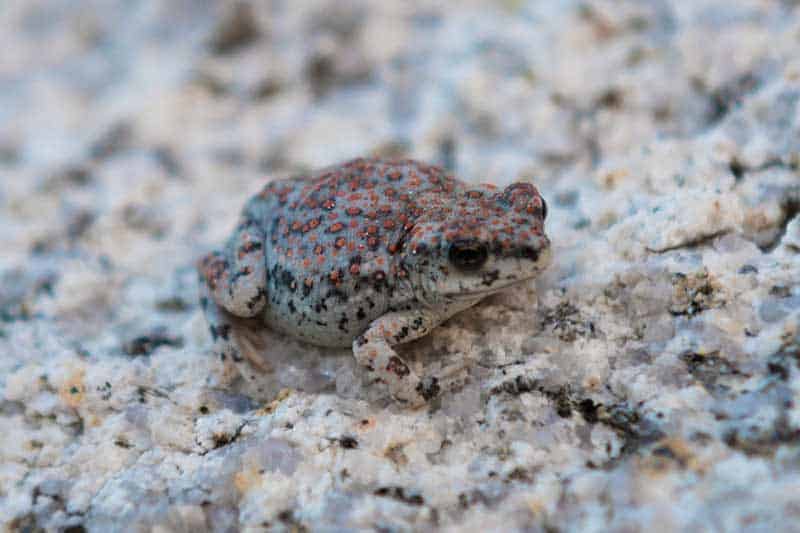
Scientific name: Anaxyrus punctatus
The Red-Spotted toad has a flat head and body that’s light gray, reddish-brown, or olive. It has distinctive red or orange warts throughout its body. You can find this toad in in extreme southeast and southwest Colorado burrowing under rocks or living in rocky canyons and streams.
4. Great Plains Narrow-Mouthed Toad
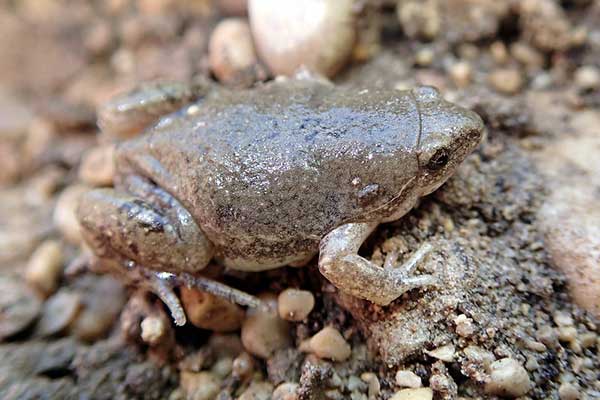
Scientific name: Gastrophryne olivacea
The Great Plains Narrow-Mouthed Toad is also known as the Western Narrow-Mouthed toad. They are small toads of around 1.5 inches in length. Their coloring is generally gray-brown or olive green with lighter bellies. Sometimes their backs have black blotching.
heir call is a high-pitched peeling similar to the buzz of a bee. These toads are among the smallest species in Colorado, exclusively found in the extreme southeastern corner of the state, making them a distinctive addition to Colorado’s toad species.
5. Couch’s Spadefoot Toad

Scientific name: Scaphiopus couchii
The Couch Spadefoot toad has smooth skin that is yellowish, greenish, or olive colors with spots of brown or black. Spadefoot toads have vertical pupils and a sickle-shaped spade on their hind feet.
They use the spades to burrow into the ground to hide from predators and prevent water loss. They live only in a small area of southeastern Colorado and breed “explosively” when rainfall creates temporary pools on dry land.
6. Mexican Spadefoot Toad
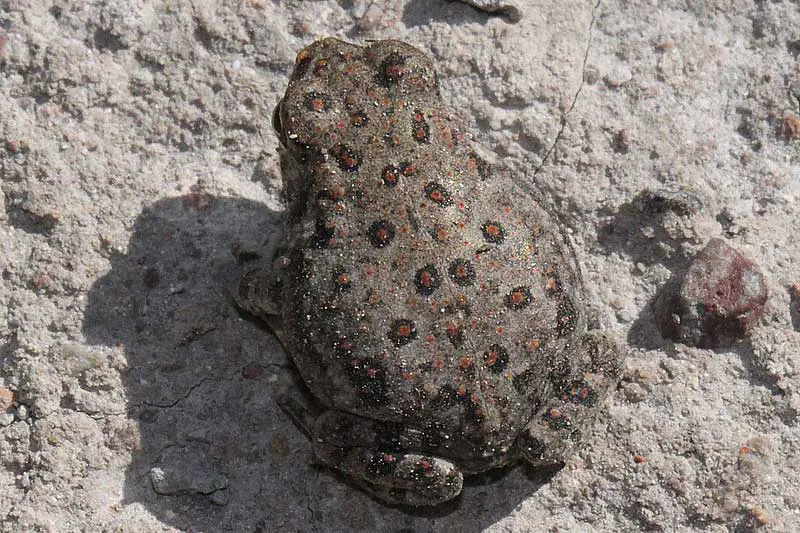
Scientific name: Spea multiplicata
The New Mexico Spadefoot toad, or Mexican spadefoot toad, has a round body that’s brownish, green, and grey. They also have black and orange speckling with withe bellies. Like the other Spadefoots on this list, their name comes from the spades on their hind legs that allow them to burrow. These toads can grow up to 2.5 inches in length.
They occur in several southwestern states like southern Colorado, Texas, Oklahoma, Utah, and Arizona.
7. Great Basin Spadefoot Toad
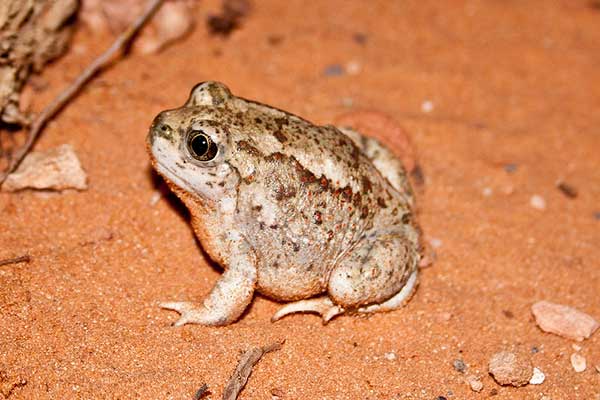
Scientific name: Spea intermontana
Named for the wedge-shaped digging claw on their foot, spadefoot toads spent most of their lives buried underground since they don’t live in wet, humid environments like most toads. The Great Basin spadefoot only occurs in western and northwestern Colorado.
As with other spadefoots, they breed after heavy rains when the gathered rainwater creates a suitable environment for their eggs and tadpoles.
8. Western green toad
Scientific name: Anaxyrus debilis insidior
The western green toad is a subspecies of the North American green toad. The western variety can be found as far west as southeastern Arizona. Both the eastern and western green toad is common to the western United States in states like Colorado, Texas, and New Mexico.
Green toads are on the small side and are bright or sometimes pale green with black spots. They are most active between the months of March and August while they are breeding.
9. Plains spadefoot toad

Scientific name: Spea bombifrons
This species has a wide range that spans from Canada through the great plains of the United States and then into Mexico. The plains spadefoot toad occurs in the eastern half of Colorado.
They grow up to about 2.5 inches in length and are typically gray-brown or tan in color. They are among the easiest toads to ID because of their red sports and the fact that they actually look more like frogs than toads.
10. Boreal toad
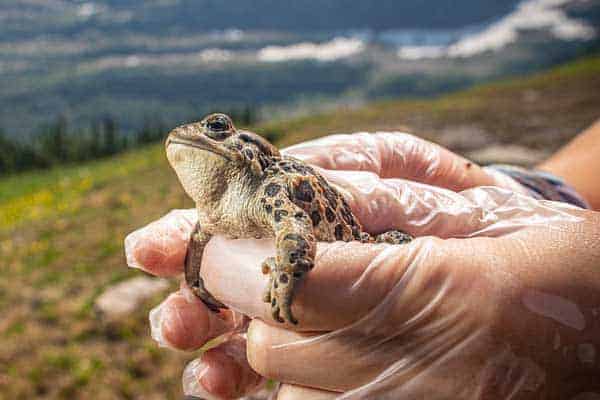
Scientific name: Anaxyrus boreas boreas
The boreal toad is a subspecies of the western toad, which has one other subspecies, the California toad. They’re mainly found in the Pacific Northwest and into Canada, but they are also found in Central Colorado. Their population has been declining lately due to a disease and they are currently listed as an endangered species in Colorado.
These toads are typically 3-4 inches in length as adults and feed on invertebrates like worms, ants, moths, spiders and beetles.
